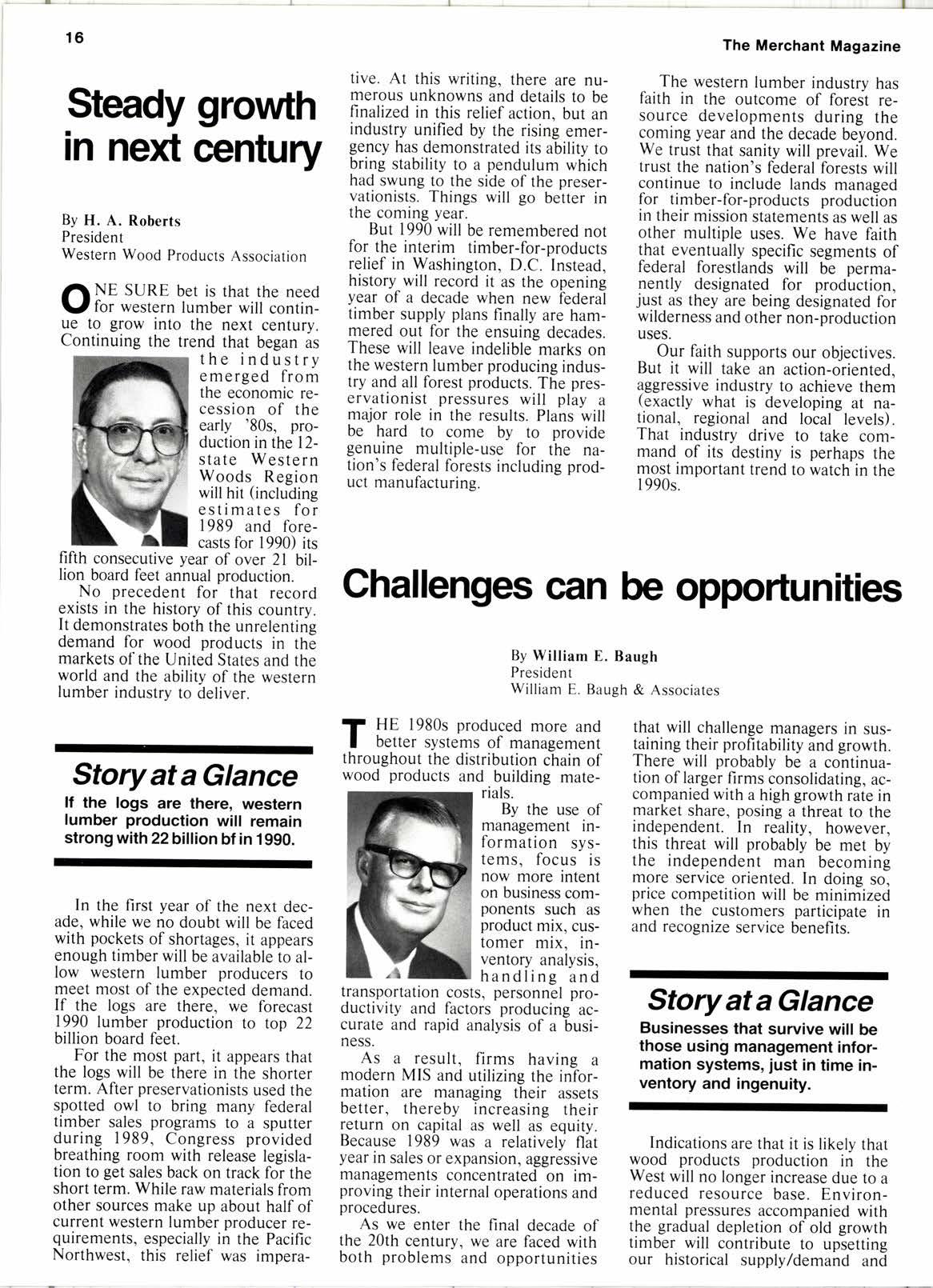
1 minute read
Challenges Gan be opportunities
By William E. Baugh President William E. Baugh & Associates
'l' HE 1980s produced more and I better systems of management throughout the distribution chain of wood products and building mate- rials.
By the use of management information systems, focus is now more intent on business components such as product mix, customer mix, inventory analysis,handling and transportation costs, personnel productivity and factors producing accurate and rapid analysis of a busiNESS.
As a result, firms having a modern MIS and utilizing the information are managing their assets better, thereby increasing their return on capital as well as equity. Because 1989 was a relativelv flat year in sales or expansion. aggressive managements concentrated on improving their internal operations and procedures.
As we enter the final decade of the 20th century, we are faced with both problems and opportunities that will challenge managers in sustaining their profitability and growth. There will probably be a continuation of larger firms consolidating, accompanied with a high growth rate in market share, posing a threat to the independent. In reality, however, this threat will probably be met by the independent man becoming more service oriented. In doing so, price competition will be minimized when the customers participate in and recognize service benefits.
Story at a Glance
Businesses that survive will be those using management information systems, just in time inventory and ingenuity.
Indications are that it is likelv that wood products production in the West will no longer increase due to a reduced resource base. Environmental pressures accompanied with the gradual depletion of old growth timber will contribute to uDsettins our historical supply/demahd and
December 1989 bid and asked method of wood Products pricing. There will be less volatility in the market, and purchase strategies based on i'market timing" will evolve into more stable pricing with fewer dramatic ups or downs. A gradual firmness in pricing should occur, reducing the risk of inventory devaluation. More attention will be given by management to controlling ^inventories as they learn the cost of carryins inventoiies and adoPt some of th6 principles of 'Just in time" inventory policy.
A continuation of the PoPulation shift toward the West should continue, particularly in the age group representing retirees. Small and medium sized communities will benefit most, causing growth rates in outlying areas to be higher than in the large cities. This should create opportunities in installing satellites or branches in areas not large enough to attract the mass marketer.
All in all, the future can be viewed with optimism bY the sales and services segment of the buildi-ng material industiy as the demand for our products continues to grow in the years ahead. Those managements who take action on what they learn from modern business systems will be the innovators who in turn will be the beneficiaries of the market.










